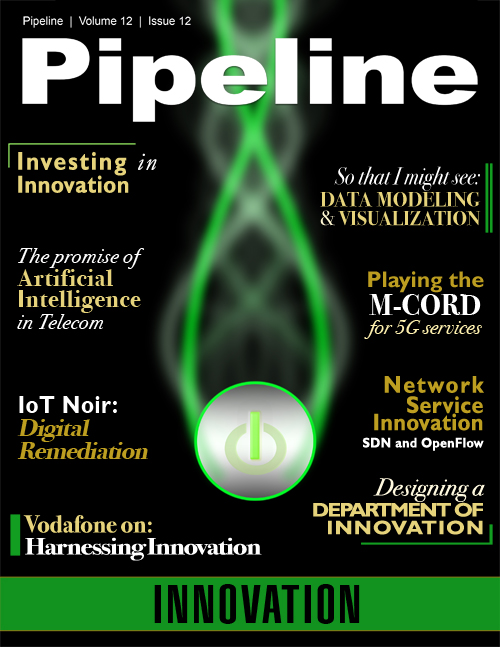Designing a Department of Innovation
As you are a Pipeline reader, you are considering how to leverage the advent of new technologies: 5G, NFV/SDN, IoT... Pick two new technologies and supply answers to the four strategy questions above in one composite. For example, the goal of an innovations department should be to provide strategic recommendations that allow a service provider who owns a <insert technology> network to make technology investments and product offerings that utilize the inherent advantage of owning their network over their indirect competition that just utilize their network.
Third, after answering the what, the catalyst team must answer who. An innovation department need not be all encompassing and all inclusive. There can be many specialized innovation departments in a company, or just one strategic group. Any specific team can be targeted on a specific concern, but the team must be broad in the skills and expertise it can bring to that consideration. So, the catalyst team creating the innovation department must answer: What should be the department’s scope of concern? But in the context of that specific concern, it needs to seed a multi-disciplinary worker group. Who, with what skills, should be included in staffing the department? For example, if it includes consideration of regulation and market opportunities, then it should include a lawyer and product marketer. If it is wrestling with a new technology, it needs engineers of related skills. If it is seeking new revenue, it needs proven product inventors and strategic marketers. If it is tackling a persistent, as yet unsolved dilemma, it needs successful inventors. Best, it should include all of these.
Are members all internal or all external (advisors and consultants) or a mix? This is a matter of corporate policy. But from experience, I suggest it needs a core group of dedicated corporate citizens who buy into the corporate dream and want to drive it forward. And it also needs some external consultants that can supply specific experience and fresh skills.
Why must it have a breath of skills? It needs to address the entire environment of the concern. Even with a dedicated collection of different skills, it will still need to draw on the broader resources of the company. What synergies and collaborations in the company would increase the success of this endeavor?
A big paradox is the very people who make up successful innovation teams are frequently the hardest employees to manage in the parent corporation. These are stubborn individuals who believe in themselves and do not give in when they think they are correct. This personality type is often disruptive when placed in teams whose job is to deliver on well-known tasks. For a good innovator, there is always a better way. Management consultants agree that the overall organization is better off sequestering these driven individuals with others of like mind, as long as egregious ego is curbed.
Lastly, the creating catalyst team and the innovation champion must determine how success will be measured and communicate that across the organization. What should the department produce as deliverables? Opportunities, strategies, plans, products, utilities, patents, or architecture? The innovation department I created and lead built working prototypes of new software services and each multi-service integration. These efforts were integrated in the engineering labs and with the vendors participating in the technology infusion. As we were early agile, these occurred every six weeks. Then senior executives were invited to live demonstrations of the working technology. These executives, including the company CTO, made a ‘move it out/let’s see more/not now’ decision. Often the code and technology then went to operation groups for select real world tests of its effectiveness. The innovation development team provided support.
Another paradox is that to be outstanding, the innovation team must be allowed to fail. But these failures must themselves be deliverables. They should include postmortem on what failed, how it failed, and how this might be ameliorated in the next attempt. An innovation department must keep trying; if it is not continually innovating it dies.



















